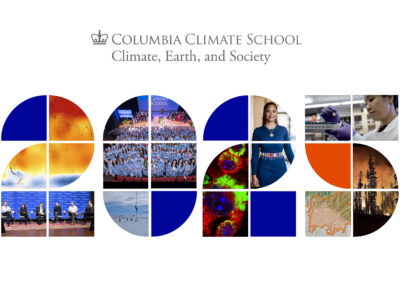Lamont scientists travel the world to understand how the planet works. Once a year, the world travels to Lamont.
In a long running tradition known as Open House, Lamont-Doherty Earth Observatory opens its doors to the public. In talks and demonstrations, scientists share what they have been up to over the last year. Here is where to learn what makes some volcanoes more explosive than others; how deep ocean currents circulate the globe; what tree rings can tell us about climate change today and in times past. Researchers also share some of their tools for exploration, from unmanned robot submarines to portable seismometers to mass spectrometers that measure tiny bits of matter.

Open House features some classic attractions:
Dancing in a tub full of cornstarch, geophysicist Mark Spiegelman shows how rocks behave at different depths and time scales. Near the surface, rocks are brittle and break during earthquakes. Further down, rocks start to flow and over long time periods cause earth’s tectonic plates to move and rearrange continents.
Seismologist Won-Young Kim, who oversees the northeastern United States’ network of seismic stations, invites visitors to make their own earthquake. A temporary seismic station records nearby ground-shaking.
Oceanographer Michael Previdi demonstrates how deep ocean currents move heat and water around the planet in conveyor-like belts. In a tank filled partly with ice water dyed red, Previdi shows how the cold water sinks through the water column to spread along the bottom.

Seismologist Ben Holtzman speeds up recordings of recent major earthquakes to let visitors experience how sound waves travel through the planet. This year he will also play recordings of man-made earthquakes in Oklahoma triggered by the injection of waste fracking fluid underground. Visitors can also make a map of the five biggest “birthquakes” to hit on the day they were born.
The Magmatism and Vulcanism group uses whiffle balls, ping pong balls and other household objects to demonstrate how the hurling power of volcanoes varies with temperature and pressure.
Open House also features new exhibits:
Nichole Anest, curator of Lamont’s Core Repository, will lead tours of the world’s largest collection of ocean sediment cores. Under the microscope, visitors can study the tiny fossil plants and animals buried in the cores that researchers use to study past climates and other earth processes. See and touch rocks, corals and other deep sea fossils and artifacts.
Marine biologists Craig Aumack and Nigel D’Souza provide a glimpse of life under Arctic sea ice. Visitors will have a chance to remotely retrieve an object using an underwater vehicle named “Brinson” while a camera provides live underwater views.
Geochemist Steven Chillrud will show how to measure the street-level pollution inhaled by cyclists. Watch personal air monitors and sensor-studded shirts that measure cyclists’ vital signs in action.
Geophysicist Heather Savage will invite visitors to bend solid granite with their bare hands in the Rock Mechanics Lab. Super sensitive instruments will reveal deformation that is invisible to the eye.
Talks will be held throughout the day in three buildings.
Lectures in Monell Auditorium open with Earth Institute director Jeffrey Sachs followed by:
Atmospheric scientist Adam Sobel, “Superstorm Sandy and Climate Change.”
Microbiologist Andrew Juhl, “Sewage Contamination and Water Quality in the Hudson River.”
Seismologist James Gaherty, “Deep-earth Imaging of Continental Breakup Along the Atlantic Seaboard.”
Open House is on Saturday, October 11. More information.
Photos and updates throughout Lamont’s 2014 Open House will be posted on Twitter at #LamontOH.














Very cool event!